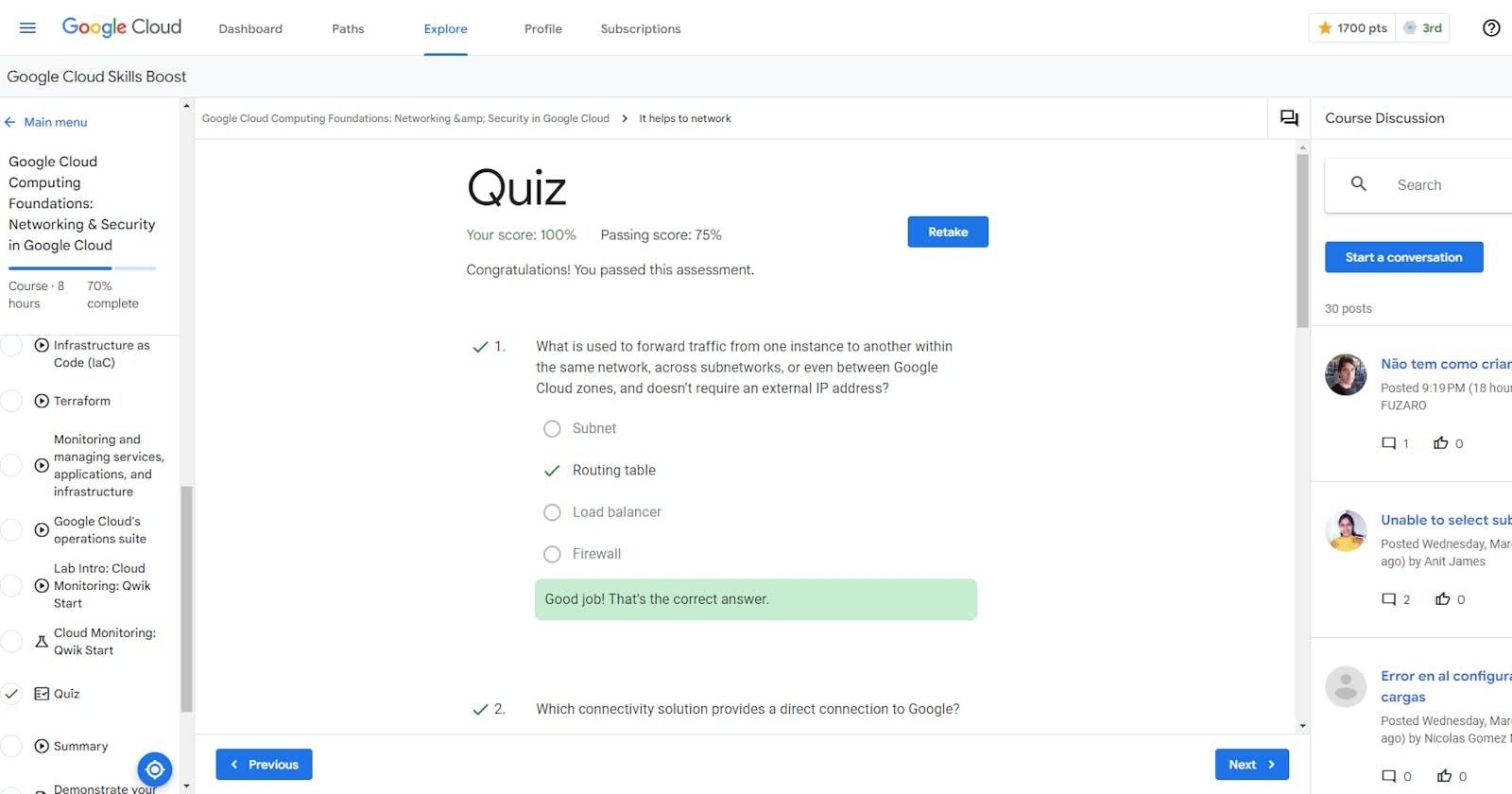Google Cloud Computing Foundations: Networking & Security in Google Cloud - Quiz
Table of Contents
It helps to network
What is used to forward traffic from one instance to another within the same network, across subnetworks, or even between Google Cloud zones, and doesn’t require an external IP address?
a. Subnet
b. Routing table
c. Load balancer
d. FirewallWhich connectivity solution provides a direct connection to Google?
a. Direct Peering
b. Dedicated Interconnect
c. Partner Interconnect
d. Carrier PeeringWhich option would you choose if you required cross-regional load balancing for a web application?
a. SSL Proxy Load Balancing
b. TCP Proxy Load Balancing
c. Internal HTTP(S) Load Balancing
d. HTTP(S) Load BalancingWhat term describes where the Google network is connected to the rest of the internet?
a. IP address
b. Point of presence (PoP)
c. Region
d. ZoneSelect the true statement.
a. Both VPCs and subnets are global.
b. VPCs are regional and subnets are zonal.
c. VPCs are global and subnets are regional.
d. VPCs are regional. Subnets are not used in Google Cloud.
Keeping an eye on things
In Cloud Logging, what is the default log retention period for data access logs?
a. 3650 days
b. 400 days
c. 365 days
d. 30 daysWhere can you store and version-control your Terraform templates?
a. Cloud Source Repositories
b. Cloud Profiler
c. Cloud Trace
d. Cloud MonitoringWhich one of the following provides access to logs created by developers who deploy code to Google Cloud?
a. Agent logs
b. Cloud Audit Logs
c. Network logs
d. Service LogsWhich tool ingests metrics, events, and metadata to generate insights through dashboards, Metrics Explorer charts, and automated alerts?
a. Cloud Trace
b. Cloud Monitoring
c. Cloud Profiler
d. Cloud Source Repositories
